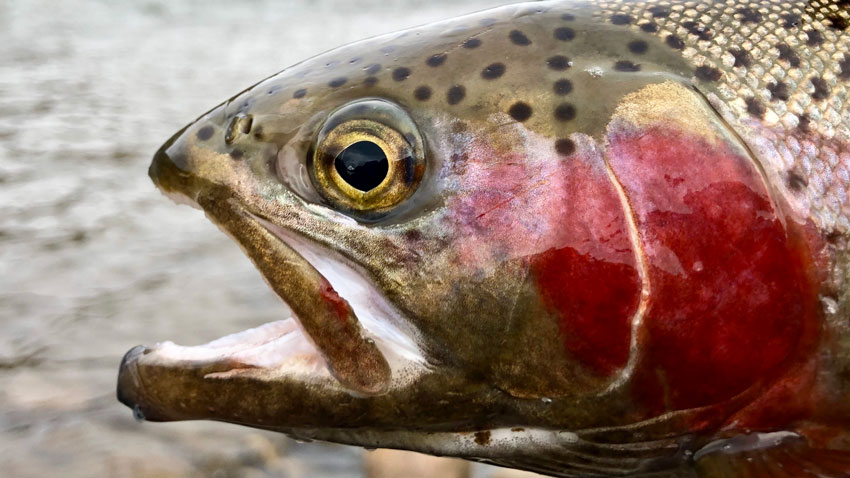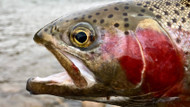Mastering Fly Fishing with a Bubble: A Guide from the Experts

At Riverbum, we know that anglers come in all types—from seasoned fly fishers to those just starting out with spin gear. One technique we’re passionate about sharing is fishing with a fly on a bubble. It’s a versatile and highly productive method that bridges the gap between spin fishing and fly fishing, allowing anglers to reap the benefits of both worlds. In this guide, we’ll explore why this technique is so effective, how to set it up, and tips for success.
What Is Fishing with a Fly on a Bubble?
Fishing with a fly on a bubble involves using a spinning rod and reel to cast a fly that would typically be used in fly fishing. The "bubble" in this setup is a float, usually clear, that provides the necessary weight to cast the lightweight fly. This method enables anglers who may not have mastered the art of casting with a fly rod to present a fly to fish effectively.
This approach is especially appealing because it allows traditional spin fishers to explore the effectiveness of fly fishing techniques without the steep learning curve or investment in fly fishing gear. It’s also ideal for situations where space is limited or where fish are feeding on insects near the surface.
Why It’s So Productive
1. Fly Presentation with Greater Accessibility
One of the primary reasons this method is so productive is its ability to mimic natural insect behavior, a hallmark of fly fishing. Flies are designed to look and behave like insects, which are a primary food source for trout and other species. The use of a bubble allows anglers to present flies naturally in areas where fish are actively feeding without requiring a fly rod or the hard to learn fly casting technique.
2. Increased Casting Distance
Traditional fly fishing requires significant skill and practice to achieve long casts, especially in windy conditions. With a bubble rig, the added weight of the bubble allows you to cast much farther, reaching fish that might be inaccessible to fly anglers. This is particularly useful when fishing large lakes, reservoirs, or wide rivers.
3. Versatility in Fly Selection
The bubble rig accommodates a wide range of flies, from dry flies that float on the surface to nymphs and streamers that sink. This versatility allows anglers to adapt to various conditions and target different species, increasing the chances of success. An Angler will be able to use multiple flies when using this technique just the same as a fly angler which allows a larger menu for the fish.
4. Subtle and Natural Presentation
The clear bubble doesn’t spook fish like a traditional spinning lure might. This subtle presentation, combined with the lifelike appearance of a fly, can be the key to enticing wary fish in clear or heavily pressured waters.
5. Perfect for Beginners
Fly fishing can be intimidating for newcomers due to its technical demands. The bubble rig simplifies the process, making it known and more accessible. Anglers can experience the effectiveness of flies without investing in specialized equipment or extensive training.
Setting Up Your Bubble Rig
1. Gather Your Gear
You’ll need the following:
- A spinning rod and reel (light to medium-light action is best).
- Clear bubble float.
- Flies of your choice (dry fly, nymph, or streamer).
- Monofilament or fluorocarbon leader (4-8 lb. test).
- Split shot weights (optional for sinking flies).
2. Rigging the Bubble
- Slide the bubble onto your main line. Most bubble floats are designed to be filled partially with water for added weight and balance.
- Attach a swivel below the bubble to prevent line twist.
3. Add a Leader
Tie a leader to the swivel. The length of the leader will depend on the type of fly you’re using and the depth you’re targeting. For dry flies, a leader of 3-4 feet is usually sufficient. For nymphs or streamers, a longer leader (6-8 feet) may be needed to reach the desired depth.
4. Attach the Fly
Tie your chosen fly to the end of the leader using a reliable knot, such as the improved clinch knot.
5. Optional: Adjust Weight
If using a sinking fly, you can add a small split shot weight above the fly to help it sink faster and maintain a natural presentation.
Tips for Success
1. Match the Hatch
As with traditional fly fishing, selecting a fly that mimics the local insect activity is crucial. Observe the water for signs of hatching insects or ask your local fly shop (like us!) for recommendations on the best patterns for the area.
2. Adjust Your Bubble’s Buoyancy
Filling the bubble with water can help stabilize your casts and provide a more natural drift. Experiment with the amount of water until you find the right balance for your conditions. For example if it is windy out you will want more water in the bubble so it rides lower in the water and is less effected by the wind once it is floating.
3. Cast Strategically
Look for areas where fish are likely to be feeding, such as seams, eddies, or near submerged structures. Cast upstream or beyond your target area, allowing the fly to drift naturally into the strike zone.
4. Use a Very Slow Retrieve
For dry flies, allow the bubble and fly to drift naturally with the current. For nymphs and streamers, a slow and steady retrieve or small twitches can imitate the movements of an insect or small fish. Retrieve slower than you think you need to.
5. Be Patient and Watchful
Pay close attention to the bubble. It serves as both a casting aid and a strike indicator. If the bubble dips or moves erratically, it’s time to set the hook.
Applications and Target Species
Fishing with a fly on a bubble is effective for a variety of species. While it’s commonly associated with trout fishing, it can also be used to target bass, panfish, and even saltwater species in the right conditions. The technique shines in lakes, reservoirs, and slow-moving rivers but can also be effective in streams and faster water with the right adjustments.
Why We Recommend It
At Riverbum, we’re passionate about helping anglers of all skill levels connect with fish. Fishing with a fly on a bubble is an incredible way to:
- Introduce beginners to the world of fly fishing.
- Expand the versatility of spin anglers.
- Provide a highly effective method for targeting fish in a variety of conditions.
Whether you’re a seasoned spin angler curious about flies or a fly angler looking for an alternative approach, this technique offers something for everyone. And the best part? It’s fun, productive, and opens the door to a whole new realm of possibilities on the water.
Check Out Riverbum for the Best Selection Of Flies!
Ready to give fishing with a fly on a bubble a try? Checkout Riverbum,com and we’ll help you get set up with the gear and flies you need for success. Our team is here to answer your questions and ensure you’re ready to hit the water with confidence.
Tight lines, and we’ll see you on the water!







